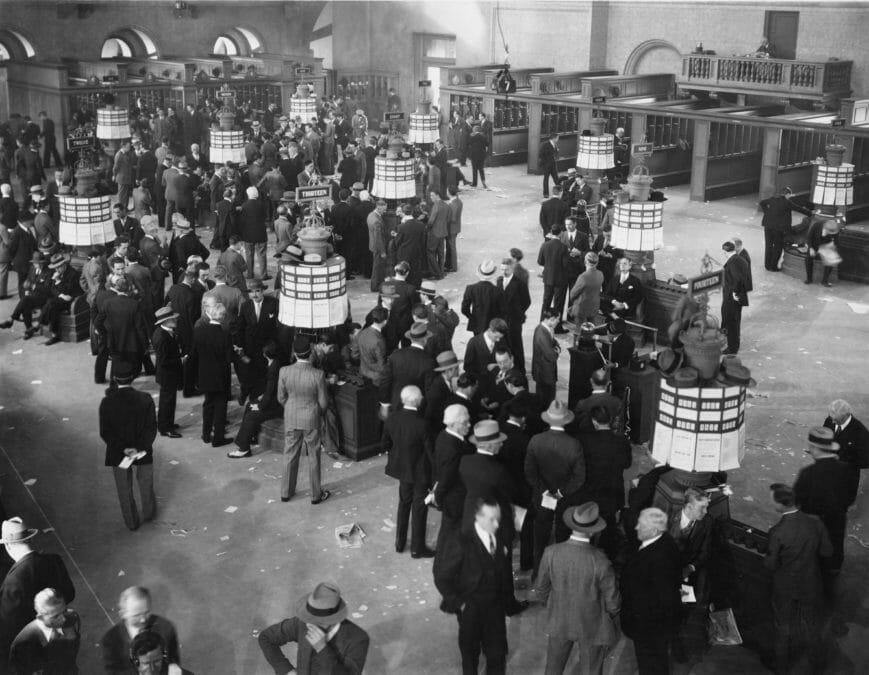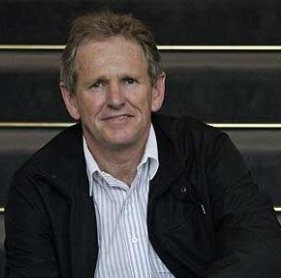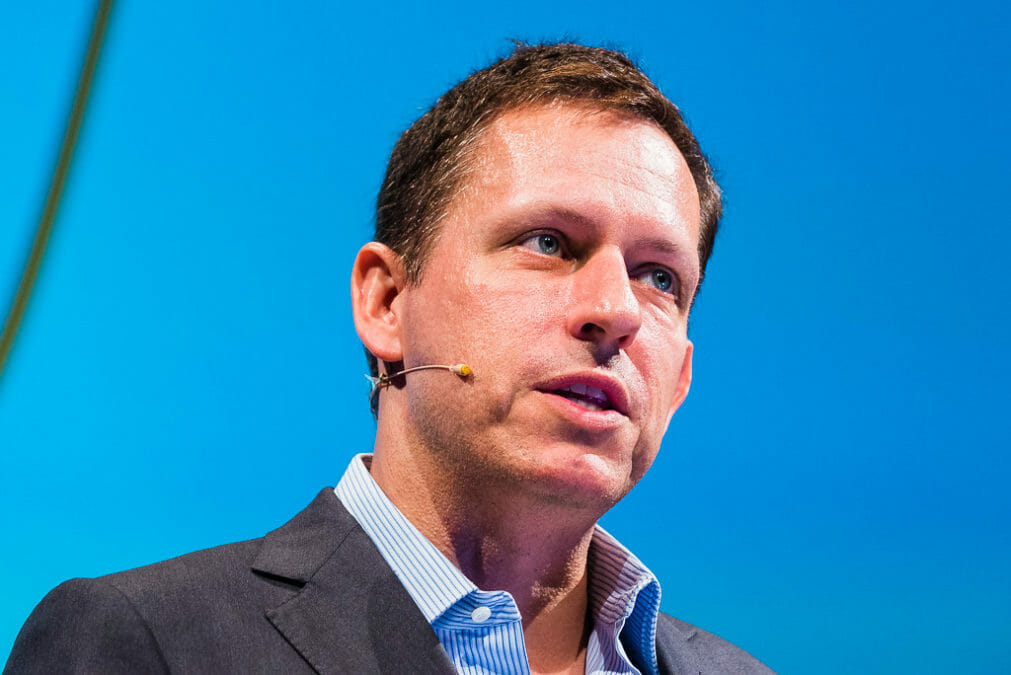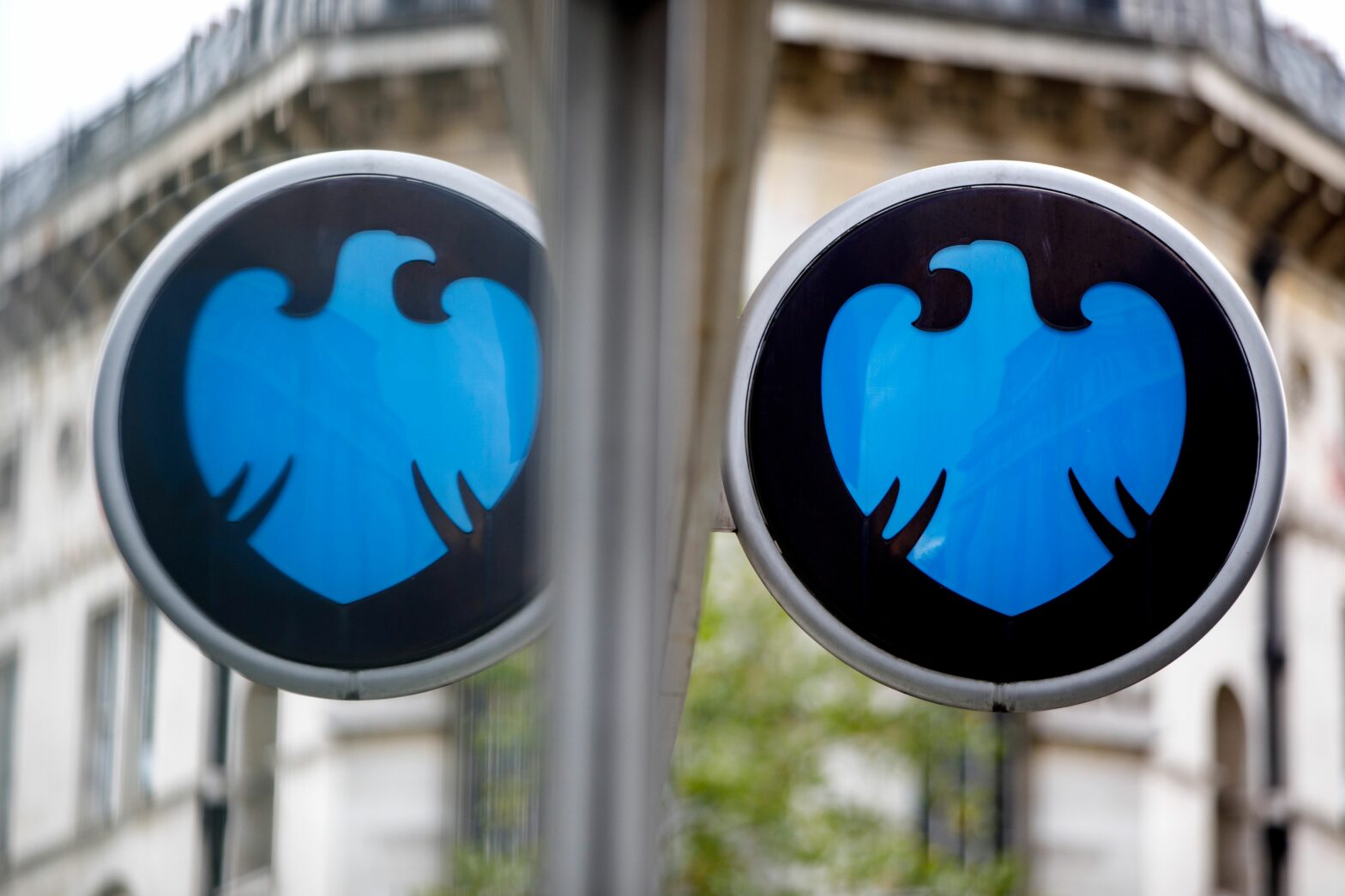Konrad Feldman, Quantcast
In a sentence: A Brit who moved to the US to further his career, became an expert on AI long before it was fashionable and is now disrupting the global advertising business, helping publishers and content producers via data grab a much bigger share of the advertising market; you could say that his business, Quantcast is helping disrupt disrupters such as Google and Facebook.
Date and place of birth: London 1972
Education: Harlow and then a secondary school in Saffron Walden. And onto UCL, where he studied computer science and began a PhD in neural networks.
Founded: Searchspace with researchers from UCL: The company became the global leader in software to detect terrorist financing and money laundering. After moving to New York, headed the key North American part of the business. Searchspace was acquired by Warburg Pincus in 2006.
Founded Quantcast in 2006 with Paul Sutter. Quantcast is an audience intelligence and measurement company headquartered in San Francisco. Combining machine learning, a privacy-by-design approach, and live data drawn from more than 100 million online destinations, Quantcast provides software, information and advertising services for marketers, publishers and advertising agencies worldwide. Founded in 2006, Quantcast has employees in 20 offices across 11 countries.
What does Quantcast do? Its data centre’s process more than 20 petabytes of data every day and the company claims that it produces accurate audience measurement to over 100 million online destinations. Its headquarters are in San Francisco, and has offices in the United States, Canada, Australia, New Zealand, Singapore, United Kingdom, Ireland, France, Germany, Italy, and Sweden.
Konrad Feldman didn’t know much about advertising, yet he founded a company that is now helping to revolutionise the industry, all the same. But then that is so often the way, it can take an outsider with little industry knowledge but an awful of lot knowledge about the very thing that the industry needs to transform it.
“When I first learnt about advertising, I was stunned,” he said.
Because while Konrad didn’t know much about advertising, he did know about artificial intelligence and gaining insights from data.
“The TV advertising business in the US was $70 billion and it was all spent on demographics,” he said. So an ad may be targeted at men 18-24. “There must be a better way to create relevance for consumers,” he thought.
But then Konrad had something going for him. He was an expert on the application of artificial intelligence, he had even worked on a PhD on neural networks. He knew about machine learning, too, back in the days when it wasn’t fashionable.
When Konrad cut his teeth on it, AI was something Hollywood talked about, it was the subject of movies featuring Arnold Schwarzenegger coming back from the future to kill Sarah Connor, but within the advertising business it seemed about as relevant as understanding some esoteric academic subject with no real-world applications, such as, well such quantum mechanics.
The ad business relied on panels — it took a random sample of people and asked them questions — and from this, advertisers worked out how effective their advertising was proving to be. It was about as accurate as targeting a dartboard by wearing a blindfold and having a group of people telling you where to aim.
“There has to be a better way,” he thought.
But Konrad was not only a man who knew about AI at a time when hardly anyone did, he is a communicator too — you speak to him for a couple of minutes and you soon realise he is hardly shy — confidence shines from him, as you will find out later when he tells us a secret, his first introduction to the world of entrepreneurship required confidence and an outgoing nature in bucket loads.
10,000 hours
In his book Outliers, Malcolm Gladwell famously talked about the importance of chalking up 10,000 hours of experience. He took a look at the first generation of tech billionaires — the likes of Bill Gates, Eric Schmidt, Steve Jobs and Larry Ellison, and suggested they had three things in common. First off, they were all around the same age. Second off, they all had an awful lot of drive and ambition. But the third common feature was not so obvious: they had chalked up a huge amount of experience working with a computer, often via a quirk of family circumstances, at a time when working with computers was unusual. They got their 10,000 hours computer time in very early — creating a certain expertise for themselves which, when combined with their more personal skills, created a formidable set of tools. But even that was not enough. Their age came into it too — the timing was right — while the skills were formidable in their uniqueness, they existed just at the time when the computer industry we know today was at its inception.
But it’s a new generation now — the era of AI is upon us and Konrad, with his drive and rare knowledge of neural networks was there at just the right moment.
“We have this remarkable ability to learn as humans,” he says, discussing the topic that dominated his thoughts when he was studying as a student. “It relates, somehow, to the fact that we have got this parallel processing taking place with all these interconnected neurons.”

“Neural networks,” he explains, “date way back to the early days of AI — that by creating these artificial neurons, and these connections between them, you can create a system that learns patterns and is able to do classification and make predictions.”
But then to see where it began we need to go back further.
Konrad was interested in computers at a young age. His first computer was a VIC-20, that was back in the very early 1980s, when Konrad was knee-high to a digital grasshopper. Back then, if you wanted to play a game on your computer, you had to type in the code. Konrad reckons he was about eight when he, along with many other kids of that age, learned to program because that was what you did if you wanted to play a computer game.

It was the very beginning of the home computer and Konrad was the perfect age. A few years later, at secondary school in Saffron Walden, he chose computer studies for one of his GCSE’s — or O Levels. But there was no option to continue the subject to A level. It’s so often the case — the education system is late to start teaching the skills that the generation of school kids will need – you hear it today, too, schools that teach Mandarin for example – they are not so common.
Konrad chose maths physics and chemistry at A-level.
“My grades were not so strong,” he humbly admits — but he got into UCL, all the same. University College London is not an easy university to get into, “so how did you get in with your grades?” I asked.
“I think I interviewed well,” he conjectured. That’s the rare combination at work again: a techie who knows how to communicate so effectively.
As an undergraduate, he studied computer science, and in his final year he had to choose a project — and Konrad chose neural networks — this was 1992, the year of the Barcelona Olympics, John Major was UK prime minister, George H.W. Bush President in the US. Lynford Christie was the 100 meters gold medalist and neural networks, which today are changing the world, were about as well known as Usain Bolt was at that time.
As part of the project, he started speaking to the researchers, including PhD students, and at the end of the course, was offered a position on the PhD programme and as a job as researcher. That way he could fund his PhD.
So his PhD was in how to get machines to learn from examples, and perform the sorts of tasks that normally required human decision-makers. During this period, Konrad and his fellow students got an occasional request for work. This was during the early days of loyalty cards. And, as a way to earn extra cash, they set up a “kind of a consulting company.” Companies had customer data, but with advances in technology, they were beginning to collect transactional data, creating quite large data sets. At least they were larger than the scale where humans would look at. Companies wanted to know if computers could help interpret this data and find patterns that could drive and improve business performance.
The upshot: Konrad got some cash and learned about different businesses by analysing their data. “I was fortunate because we got to work with lots of different companies in lots of different sectors, so I learned about telecommunications, retail, utilities, banking and insurance”
He also looked at how AI systems could interpret financial markets and make predictions and then trade on the basis of those predictions. These days, that is normal of course, but not back then, in the early 1990s, such a concept was quite novel. “And we were among the first in the world to use this neural network approach to trade, focusing on the long gilt futures contract on LIFFE.”
They got some popular press too, it was “considered quite a sexy area,” Konrad explained.
This was a time when the whole way financial markets operated was changing. The era of men and women standing in trading pits, screaming ‘buy’ or ‘sell’ was giving way to an age when trading was primarily conducted by computer, or via telephone calls, records kept on paper were changing over to computer records.

This brought with it a new challenge. A key currency for the smooth operation of financial markets is trust. There has to be faith that trading is fair, that no one individual has some advantage over others that is illegal or unreasonable. So self-regulation of exchanges is vital to ensure their popularity. Back when trading was conducted in pits, human beings, men and women who had themselves worked in pits for years, were employed as pit observers — their job, to spot unusual behaviour — a trader for example, conducting trades from a pit they did not normally inhabit, someone who, for example, trades telecommunications stocks, but sprints over to an FMCG pit to trade there. Unusual behavior did not mean there was a problem, but it was an indication that it might do.
The challenge emerged with the handover to remote trading, from computer desks, away from the pits. How might such unusual trading be observed when trading is conducted by disparate activities scattered from myriad locations? Looking back from today, the solution might seem obvious, but in 1993, applying AI was a bold idea.
That was when Konrad got a call from The London Stock Exchange. “If I remember correctly, we got paid £15,000 for five of us to do the research, over maybe 3-4 months to investigate the viability of using AI.”
Working in the academic world, Konrad had a lot of flexibility, so he put his PhD on the back burner, and after doing the research went back and said “it was entirely possible for a computer system to identity insider trading or wash trades and other manipulations.”
That was that: job done, a few thousand pounds richer, until, many months later, the stock exchange invited them back in again, and asked, if they could build the software? “We were so naïve, no idea how much to charge. They said something like ‘we have budgeted £300,000’.” So Konrad and colleagues said “YES”. Presumably they said it with considerable enthusiasm. He says: “In retrospect, jumping at the first big offer isn’t necessarily the best way to choose the area you want to get into.” He explains, “what matters is the total addressable market and the total addressable market for stock exchanges that can spend hundreds of thousands of pounds on monitoring software is extremely small.
The emergence of London’s Silicon Roundabout: why? And lessons for future tech hubs!
What inspired the emergence of silicon roundabout? Why there? How can future tech hubs be built?
The resources of a university
Konrad had another thing going for him. Back then, computers were slow, network speeds made snails seem speedy, the internet moved at a pace that made snails seem supersonic. But at UCL, Konrad had access to what, at that time, were very powerful computers.
He explained: “One of the reasons why we are seeing such advances in AI and deep learning today is the power of computers available and the other is the data sets that are available — at UCL, it was possible to distribute code across a network of computers — maybe 100 of them — the more iterations you can run the more chance you have of creating something that will work well. Having access to processing muscle might be quite normal today, but back then, the UCL system was exceptional.”
“And so we built the software,” he says, setting up Searchspace. No one else was doing this at that time, “you want the software to catch bad actors, but what you really want is for the presence of the software to stop people even attempting it in the first place.”
It was 1996, Konrad was being put under pressure to finish his PhD, but his problem was his advantage — his killer app was expertise in AI, just at a time when the commercial benefits from having such expertise were taking-off. He then received a call from the New York stock exchange, how do you complete a PhD when you are in such high demand?
Searchspace built further systems for the LSE and branched out into other markets, including Lloyds of London for example.
Banks, just like the stock exchanges, were changing. They relied on people to provide services to customers and identify issues. Bank tellers had “great context,” they knew their customers, who might regularly come into the bank branch, giving them the opportunity to cross-sell products, and identify issues. “This context is super important for identifying something unusual, so if someone comes into a bank with a lot of used notes in a brown paper bag, they know that is potentially suspicious, and they will follow procedures. By the time of Searchspace, this was becoming more difficult, with tellers no longer seeing the transactions. How do you take something that feels abstract, such as context and knowledge of customers that a bank teller has and replicate that in a computer system that can look at every transaction in the bank? So, we created software systems for four of the big five banks to do that.”
Konrad and his Searchspace colleagues realised, however, that there was more potential in the US. There were more banks, for one thing.
On January 2nd 1999, Konrad moved to the US. There were four founders of Searchspace, but Konrad was the youngest, had less ties, and he built the business in the US. The company became the largest provider of systems used by banks to detect money laundering and terrorist financing.”
Quantcast – a beginning – partying in the Valley
The origins of the thinking that later became Quancast began 1999, via a party.
Konrad, working on a contract with Wells Fargo, found himself in San Francisco. It was the beginning of the dotcom era, companies raised money and then they celebrated. “It seemed like people were spending 20 per cent of the money they raised on parties.” And one such party, presumably with no shortage of glitz along with popping corks, was thrown by Alta Vista. Back then, Alta Vista was the world’s leading search engine — Google it, if you are not convinced — and Konrad found himself engulfed in a conversation with Alta Vista discussing AI.
“Could the techniques used by banks be used to detect problems in internet businesses?” he was asked.
It was a light bulb moment. Alta Vista were operating a loyalty scheme, “you did a search from their shopping portal, you accumulated points, and exchanged them for goods,” which in turn could be turned into cash. (They were fungible.)
It was the turn of the century; the new millennium was beginning. Konrad found himself wading through needles. He explained: “One of the problems with identifying problems in a big bank is that it is a needle in a haystack problem, there is very little money laundering or funding of terrorism,” but looking at the Alta Vista loyalty programme, the challenge seemed to relate to finding hay, “there was no hay, it was all needles. People wrote bots to browse all day, people had written computer programs pretending to be people, accumulating points.”
Konrad’s mission was to create software to identify the bots. He presented his findings to Alta Vista, “it was going great”, and the next day, they shut the programme down – the dotcom crash had begun.
Luck comes into it, then — and Konrad had both types: oodles of good luck, oodles of bad, maybe success boils down to riding the good, minimising the bad.
The company sale and the beginning of Quantcast
The Alta Vista conclusion was disappointing, but something was lit in Konrad’s imagination — it ruminated, it was gradually digested, but in the meantime, there was serious business to do: Searchspace had banks to think about and the process of helping compliance. And this is what happened for the next half a decade, the company raised money from 3i and in 2006 Searchspace was acquired by Warburg Pincus, who used the business for a roll-up they were doing in the compliance space.
Konrad, a good deal better off, decided he wanted to do something else involving internet data, and figured that everything internet was happening in the ‘Bay’, so he moved to San Francisco.
He took some time off. He got back into coding and looked at ways to apply the computer analysis skills he developed to internet data. He had become friends with Paul Sutter, a serial entrepreneur who was leading engineering at Alta Vista after it had acquired his startup, Transium. They had been talking about doing something together, and in 2006 the company Sutter started after Alta Vista was acquired.
Paul’s background was in what we now call big data, building computer systems that can handle massive amounts of information. Konrad had a background in analysing massive amounts of information. So they agreed to work together, applying AI techniques to internet data.
They looked at different areas, fraud space, payment systems space, “we had small teams working on different areas,” he says, and in early 2006 they started looking at internet advertising.
In the years immediately following the dotcom bust, after a short hiatus, search related advertising boomed, the rest stopped. Konrad, with his background, could immediately see the appeal of search advertising, the way it could be targeted so precisely, but he was puzzled — or curious, as Konrad put it, about advertising on websites. You visited a site and no matter who you are, you saw the same ad. “That didn’t make sense,” he thought.
Konrad had no experience in advertising. He put an ad on Craig’s List, ‘do you understand advertising? Give us an hour of your time, and we will pay you $20 to help us understand it.” The responses came in thick and fast including senior executives at ad agencies. “They had obviously been talking about the Craig’s List ad, their own curiosity had been piqued.”
“We asked the most basic questions,” recalls Konrad, “who do you know who you want to advertise to, how do you know who they are, if they are the right people? He learned about the RFP at this point — request for a proposal. And the penny dropped. Konrad, explained, “historically, with advertising, one size fits all, a radio show or TV show, or a web site, the ads apply to the aggregate audience, but that is not how search worked, it is unique to each person.”
This is why, Konrad, with his background in AI and analysing data, was stunned. He realised it wasn’t that demographics was a really good way of creating relevance, it was the only thing a buyer and seller could agree on what the other person meant. “We all know what man 18-24 means, whereas, say, outdoor enthusiast was very ambiguous.”
The data did not exist for the individual.
“So the hypothesis we wanted to test” he said, “was whether with enough internet data and applying the right analytical techniques, we could manufacture the type of data referred to in RFPs, but not at the aggregate level, but at the individual impression level.”
They ran ads — they came from affiliate networks, “we weren’t focused on what the ads were for,” and ran them across multiple websites. The object was to collect data, and over 5-6 weeks, they ran advertising across around 4,000 sites. Konrad developed some analytical software for which the goal was to rank sites in order based on certain characteristics, for example income level. “We got friends around, gave them pizza, and based on best estimates ranked the sites.” He says there was very little in the way of sources of truth, the data that existed came from panel-based companies, with radio and TV, you don’t know who is turning in, so you need a sample of listeners, you can use to observe and extrapolate up. These techniques were used when were there were three TV stations, but one of the challenges of panels is that they are a sample, so as the number of media channel grows, sampling errors increase, this means that only the largest channels can get anything approaching an accurate measurement.
It was like that with internet advertising, too: only the biggest were noticed by advertisers when lack of data meant it was too difficult to target ads.
So, Konrad had to fill in the gaps. At the end of the testing, he was able to show that there was a link between sales, target audience and rank of sites for that audience and by cross referencing data about information where the businesses resides with census data. “While the analysis was a rough first draft it was clear that the computer could consistently find signal in this data. But it was nothing like the detail possible today.”
Konrad thought he had something. He felt it was inevitable that the advertising world will look more search like such that the experience would be tailored to create more relevance to consumers.
He shut down the other projects, leaving him with a small team of around six people which he called Quantcast. He explained the name: “The internet operated, outside of search, on a broadcast model. To this day, the broadcast model operates with the minimum divisible unit of everyone, but on the internet the minimum unit,, the quanta, is the individual, so why would you
broadcast if you could Quantcast?”
Technology entrepreneurs and technology entrepreneurship: real life stories, real life lessons
More serendipity
A new technology from Google created possibility, a chance contact, a breakthrough. The idea behind Quantcast was good, but there was a problem. It was difficult to scale — for serious data, crunching was a hardware constraint. At this time, Google published a paper on the paradigm they created called MapReduce — the ideas for which was for a programmer to distribute the load of their program across many computers. Google, itself, wanted to analyse web pages, but Quantcast wanted to replicate what a relational database did. So that was one piece of serendipity.
Even so, the maths was hard, and brainy though he clearly is, Konrad needed help. He started speaking to statistics researchers, and he soon highlighted certain gurus on this topic, working at Stanford University, who he needed help from. The statistics department at Stanford was world renowned, but everyone wanted to speak to these people, in particular Trevor Hastie and Jerry Friedman.
Konrad was struggling, until he was In New York, with a friend from London, and he happened to mention his problem in making a connection at Stanford.
“His name isn’t Trevor” is it? asked his friend. It turned out that the chair of the Stanford Statistics department was married to his friend’s step mother’s sister — that was quite the breakthrough.

The introduction was made, and from that Konrad also met Jerry Friedman. They were both “like gods in the world of statistics.” And they have been advising since inception.
Finally came the insight and a dollop of courage Konrad was focused on advertising, of using AI to analyse data. But to do, that a lot of data was needed.
Thanks to the sell of Searchspace, cash was available.
He knew that the measurement systems were not very good, “we had lots of friends with internet start-ups and they all complained about measurement services, such as from comScore and Nielsen, that did not accurately reflect their data, so they had nothing to share with advertisers and investors.” They needed more hard data. And after research, realised that the ad buyers didn’t like the services, either.
Konrad Feldman on the advertising industry pre-Quantcast
So here is an industry, with half a trillion pounds a year spent on advertising, but neither buyers nor sellers liked this critical service.
So here is an industry, with half a trillion pounds a year spent on advertising, but neither buyers nor sellers liked this critical service. “It was an opportunity for disruption” he said with British understatement — it seems all his years in the US has not taken that from him.
“We needed a way to weave ourselves into the fabric of the internet, to have the visibility and context to better understand audiences and reach and influence them, to disrupt the audience measurement space. And in 2006 launched Quantcast Measure.
It was disruptive for two reasons: one it was free, while other systems costs tens of thousands of dollars a year. It also allowed any website owner to directly contribute their website visitation information, so rather than have a sample, they can directly measure every page.
Lean startup for tech entrepreneurs
At first, all they could do was help a website owner understand how many unique visitors to their site they had, how many pages, etcetera, but for many publishers this was enough. And from this, Quantcast worked its way up the market. The data created a network effect. At first, each site appeared as an island, but as more data was collected, a picture emerged of traffic passing between sites, “and that connective tissue – the visit graph – is the data structure that we could apply machine learning to.”
This is classic tech — scale creates a network effect, creating a more desirable product, creating more users, creating a bigger network effect. After about a year from the launch of Quantcast Measure, they got requests from bigger media companies to use the tool.
This where the gutsy move came. By the end of 2006, a lot of companies were using Quantcast data when pitching to investors, so investors became aware of Quantcast. The company got approaches. But when the vision was explained, companies would say “but at the moment we are paying $100,000 a year for a service that is not very good, there are 100 of us, why give it away for free?”

Image by Dan Taylor.
You can see the allure — there’s $10 million of revenue a year. But Konrad says: “it is really hard to focus on more than one thing.” If we did that then, naturally, the weight of the company and things we pursued would be around that research area, it is not that this was a bad area, but we saw this bigger opportunity. And we were fortunate that we did not have to take the first money that came long.”
During this period, they were introduced to Peter Thiel, famous investor and co-founder of PayPal, and through him the Founders Fund, which focuses on investing in companies with revolutionary technology. And from Mr Theil and the Founders Fund, instead of being told: “go for this money that is available right now. They were advised to take a longer-term approach. “Why don’t you look to the big idea in the future,” they suggested.
With support from the Founders Fund, Quantcast raised $5 million from a series A in April of 2007, and focused on building out Quantcast Measure.
“We had a small team that we could put out to the media companies, and people wanted to understand the modelling. “We focused on building out adoption of Quantcast Measure.” But revenue was zero, during this period. It was only possible thanks to having investors who shared the vision.
They raised a further $20 million in December of 2007, but by the beginning of 2009, even patient investors wanted to know when they would start making money. in June of 2009, they finally launched a commercial product: ‘Quantcast Advertise.’
When we started Quantcast, we knew what the goal was, but we didn’t know exactly how it would get applied. We knew that the data would be valuable, but the way to get value was not to give data to people and hope they could do something useful with it, but to drive outcomes.”
With traditional advertising and the famous request for proposal (RFPs) that characterised advertising plans, “there is a lot of human hypothesis and subjectivity and we realised that for a growing set of advertisers, who had grown up online, we did not have to guess or hypothesise, we could actually measure their customers and build models and use machine learning to find the patterns of behaviour that are predictive of someone becoming a customer, if we reach them at the right time and in right environment, and so on.”
Expanding on the idea further, Konrad said: “If an advertiser uses Quantcast measure, we could see that say 1,000 people who have bought a given product, maybe it was airline tickets to San Francisco, and we could all hypothesise as to why someone might buy tickets to San Francisco, to a conference perhaps, or to visit Alcatraz, for example, and we would all be right about some small minority of the total audience, but the beautiful thing about computer systems is that they are not limited in the number of dimensions they consider, compared to how our brains work. They can consider a lot of data.”
UK tech entrepreneurs’ advice
The launch of advertising exchanges
But there was one more piece that was added to the mix. At about this time Google launched advertising exchanges. These exchanges needed you to interact with them, and they provided very fast distributed computer systems which complemented Quantcast Measure.
In short, developments elsewhere created new, and much greater commercial opportunities for Quantcast.
Konrad Feldman
AI is going to transform every industry, it is a bigger shift than the internet was. So when I think about our role, which is AI in the marketing arena, every consumer interaction, between a brand and a consumer, if you can make their interaction more timely, more relevant, then of course the people who do it will have a competitive advantage.
Was it luck — the vision was right, Konrad himself quotes Louis Pasteur: “chance favours the prepared mind.”More than search
Search had been taking the cream, and a good deal more besides from the advertising cake – but as Konrad points out, people only spend around four per cent of their time on search, the rest of their time is spent browsing consuming content, and so on.
Search has been grabbing such a large chunk of the advertising revenue because of the way it allows advertisers to target their ads so accurately. Now, there is a chance for publishers, and content producers to grab market share back – disrupt the disruptors, as it were.
“What Google and Facebook have done that makes advertising so valuable is that they have a large set of data and they have a set of tools that translates that data into predictions. The interface into how people buy that, they can hypothesise on the key words, and the interests someone has got. The Quantcast approach is different. Rather than think of the various things that shows someone is relevant, with Quantcast it is case of “show us examples,” and use machine learning to find all those things that are relevant. “
Facebook and Google take 85% of growth in advertising, Our mission is to empower all the other parts of this rich eco system, the brands, the agencies and publishers with the same sort of computer power and AI technology that lets them create those same sorts of relevant compelling experiences.”
“AI is going to transform every industry, it is a bigger shift than the internet was. So when I think about our role, which is AI in the marketing arena, every consumer interaction, between a brand and a consumer, if you can make their interaction more timely, more relevant, then of course the people who do it will have a competitive advantage.
Konrad Feldman Quickfire
What work gadget would you not give up?
Audio books which I listen to while I am traveling, as an app on my phone
Who is your entrepreneurial hero?
People who take on big challenges. I think what Bill Gates has done, in applying that spirit in his philanthropy is an inspiration to a lot of people. I have been fortunate enough to see him speak about this, and he really understands the fundamental challenges relating to the initiatives the Bill and Melinda Gates Foundation is involved in . What is so exciting today is how many great innovations are out there, and how many people are trying to improve the world.
What is your music choice for inspiration?
Different sorts of music depending on what I am trying to do, but generally a lot of electronic music.
How do you manage your working day?
Depends on where I am. When I am on the road, most of the time is spent meeting with our teams and customers.. When I am at home, I am in the office fairly-early, and use that time to catch-up with folks elsewhere in the world, and then its a mix of operating and strategy sessions, and, ideally, have clear time to think – both about pressing issues and longer term ideas.
Lunch at the desk, with clients or colleagues?
All of the above, sometimes on the same day; I have been known to do two lunches. We have lunch catered in all of our offices, so that is a great time to catch-up.
Tell us a secret:
“I had a very short career as a DJ in Greece. I wasn’t very good so DJing didn’t pay much. I wasn’t ready to go home so, in between gigs, I began helping local club owners understand how to get more clubbers through the doors in an incredibly competitive market where there’s low barrier to entry and little differentiation between products. Looking back, it was a very early and very valuable crash course helping brands connect with their target audiences.”
For other articles in this series, see
Tech disruptors, Cally Russell, founder of Mallzee: his story
Tech disruptors, Tom Blomfield, founder of Monzo Bank: his story
![]()
Article produced in conjunction with Great British Entrepreneurs.







